Of Sedgwick’s 31,000 colleagues, it’s fair to say few are as prolific as Kimberly George. She’s everywhere! Before taking the helm as head of Sedgwick’s global innovation and product development, she served as the organization’s senior vice president of corporate development, as our senior healthcare advisor and in a multitude of workforce absence and managed care leadership roles. Prior to her tenure at Sedgwick, she began her career as a registered nurse in a neuro-trauma unit. All this to say: she’s an expert. And she’s not done yet.
edge:
Kimberly, if we were to talk about all the things you touch across the organization today — not to mention what you’ve contributed over the past 22 years — we’d have to write a 10-page article. If you had to boil your current role down to a single sentence, how would you describe it?
Kimberly:
I get to look at products and processes — maybe a new technology, partnership or acquisition — and guide the strategy that will ultimately improve Sedgwick’s outcomes and performance for our clients and their customers. I’m a strategist and change agent by nature.
edge:
When it comes to looking at innovation as a professional discipline, both within Sedgwick and across our industry, what do you see?
Kimberly:
When we think about innovation, it’s often about how we can take something we already do very well in one part of the world and introduce it into new geographies. We’re asking ourselves where we can expand the products and services that align with what we’re doing today, but in new places.
One example is our decision to acquire full ownership of Leif Hansen last year, allowing us to enhance our workers’ compensation services in Denmark and throughout the Nordic region. Similarly, we’re expanding our international footprint with workforce absence and nurse triage solutions, such as our Direct Health Solutions (DHS) business in Australia.
It’s also really exciting to see our investment in the Genesys omnichannel customer care system coming to life now — it will change our world and support multinational client programs. It’s so much more than a phone system; when fully implemented, it will understand sentiment and measure how our service representatives are helping to build the resilience of the person they’re speaking to. It will offer a real-time opportunity to give our colleagues what they need — a pat on the back, some time to decompress — to, plain and simple, do their jobs even better. (For more on Genesys, see Tech forward in this issue of edge.)
Whether it’s workforce absence, workers’ comp, property, liability — really, across our business — that’s what it’s about: how we can do things better. How we can deliver a top-notch global user experience with ever-greater efficiency. We’re looking at how and where we can introduce light- or no-touch support, but also how we can continue to enhance our care team. It really is about taking care of people.
Nearly every company is talking about innovation right now, but so few have any real plan in place. We’re planning, and we’re executing. We’re measuring and seeing things through, and I’m really excited to see things continue to come to fruition.

edge:
How does Sedgwick’s new client engagement platform, circles, encourage that kind of focus on the client and customer experience?
Kimberly:
We launched circles in July to give our clients — all our clients — a platform where they can safely listen, learn, and share in a collaborative environment of their peers. Where there have historically been opportunities for these types of conversations for select groups, circles offer all of us a chance to go deeper.
The concept is pretty simple: Circles provide forums for clients to share best practices with one another and jointly address current challenges. We’re here to listen and facilitate conversations. Circles are exclusive to our clients, but we purposely did not delineate between lines of business. Instead, we’re connecting clients based on their industry verticals and areas of interest, from aviation and retail to transportation, risk management and benefits.
edge:
How can clients get involved?
Kimberly:
They can sign up any time, for any circles that interest them. And it’s relatively low-commitment; folks can come and go from any given circle as they see fit.
It’s very “person” focused — there’s a chat, you can see and interact with your fellow circle members, register for events, and access content and past session summaries. There’s a broad range of information available.
What I really love is how many clients have signed up for multiple circles — they want to learn and hear about what’s going on even outside of their specific area of expertise. They want their own personal wheelhouse to encompass more. A retailer may sign up for the healthcare circle, for example, if they offer health clinics.
We’re aiming to do 30 sessions a year, depending on the demand. Plus, there are small-group collaborations — breakout groups where participants can get more specific with their discussions. My goal is to see circles become our clients’ go-to spot for information and conversation.

Sign up for circles to stay on top of trends and forge new connections
Sedgwick clients are invited to join as many circles as they wish. Circles are organized by industry (such as aviation, financial services, healthcare, retail and transportation, etc.) and by area of interest (benefits, managed care, property, risk management, technology, etc.).
Clients interested in signing up for circles or our quarterly In the Know webinars should contact their designated Sedgwick client services director for details.
edge:
When it comes to the trends that are fueling emerging solutions around the world, what’s on your mind?
Kimberly:
On a recent (very long) flight home from Barcelona, I had time to think about more than just my immediate to-do list; I got to thinking about the nature of our business. Insurance is all about looking back — we have to know what happened. It’s a data-driven, experience-driven industry. But more and more, that data is helping us to predict the future. It’s exciting to see new disruptors coming into the market and really making their own way. They’re broadening our ecosystem.
To be the best, you have to be willing to partner, even — or especially — in ways you might not have considered before. Even a company of Sedgwick’s size needs to partner in order to keep up — and certainly to advance. And strategically, we’re always working to figure out how we can help our clients advance right alongside us and how to be real advocates for constantly improving the customer experience.
That means thinking differently, and sometimes hiring differently. I’m working a lot with our colleague resources experts, diversity, equity and inclusion (DEI) and environmental, social and governance (ESG) team and our business groups to review some of our talent attraction and development practices and predictive tools. We’re lucky to have the internal and leadership support to allow us to spend time thinking about tomorrow versus constantly playing catch-up.
A perfect example of this forward-thinking approach is the recent launch of our climate resiliency solutions. Evolving regulations around the world are putting greater emphasis on corporate sustainability and ESG efforts. Weather-related catastrophes are sharply on the rise. We want Sedgwick to be the go-to source for mitigating environmental risk and navigating these trends. To that end, we developed a comprehensive suite of solutions to address three key phases: ready, resolve, and recover. Our experienced teams across the globe can provide customized services, technical assistance, and innovative support to help clients through every step of their claims journey.
edge:
How are you seeing things like AI and ChatGPT shift the conversation?
Kimberly:
People are worried about it. Will it help? What will it do to staffing levels and team dynamics? It’s natural to question how it’ll fit into the narrative.
But really, the innovative technology helps us be more human. All the time we used to spend sifting through data and depending on manual entry, AI gives back to us. Where the administrative work took away our ability to empathize and really listen, AI takes some of that off our plates and allows us to focus on what we’re best at: being human.
I got to speak at a recent conference about insurance as a career destination. At some point, our industry became a stopping point before moving on to something else. When you bring the real work we do to the forefront — taking care of people — and give people a collaborative, supportive environment, you have a tremendous opportunity to make a difference. This amazing industry needs us to be innovators, to bring in fresh new minds and to ensure that the talented people who are here today want to stay for tomorrow.
edge:
Apart from all the work you do for Sedgwick, you also serve as president of the Alliance of Women in Workers’ Compensation. What’s that leadership role mean to you? What impact is it having?
Kimberly:
One of the most amazing opportunities my position at Sedgwick grants me is the ability to be a leader in the industry. The Alliance came together to support the next generation of women — which, to me, is hugely important because, although women make up the majority of the workforce in workers’ compensation, the same is not true of leadership.
We’ve got nearly 7,000 members; to be able to provide support, professional development, industry education and networking to them is invaluable for our field. We’ve got local ambassadors around the U.S. who deliver content in person, virtually, however they can. We’re on track to hold 150 events this year.
I just think it’s so cool that Sedgwick not only participates, but that we actively seek out ways to help the industry. It’s that kind of outward and forward-thinking focus that makes us so successful.
